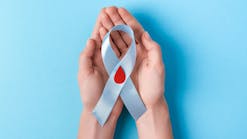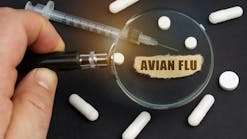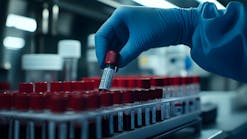The clinical laboratory at CMC has fully embraced LEAN production by decreasing waste (muda) in order to increase value for patients. Reconfiguring the lab to implement one-piece flow for specimen processing and introducing the signboard or pull system of kanban are just a few examples of the lab’s steps toward transformation to improve efficiency.
But as many organizations have learned when they institute LEAN, they must truly adopt its philosophy and culture before they can enjoy LEAN’s full benefits. With the recent initiation of an ambitious recycling campaign, the lab at CMC is reinforcing the main pillars of LEAN: the culture of continual organizational learning and improvement (kaizen) and the importance of challenging employees to use initiative and creativity to experiment and learn.1
Once personnel saw how much money, time, and space they were saving, they were happy to reuse the boxes.
First, lab management identified an individual who was already excited about “being green” to spearhead the project. She and the rest of the newly formed “LEAN Green Team” took the concepts of recycle, reuse, and reduce and applied them to various areas within the laboratory. The team’s goals were to expand awareness of the necessity of recycling and to motivate the entire laboratory to participate in a new green way of operating. The laboratory held a recycling kick-off party in September 2009 with a contest to name the recycling mascot, singing, and green-themed decorations and food. For instance, empty two-liter beverage bottles stuffed with reused packing paper were used as table centerpieces, and reduced calorie food and recipes for reusing leftovers were available. Further information about the program was provided to employees during stand-up meetings and via e-mail, signs, and the laboratory newsletter and website.
Recycling
CMC started a house-wide recycling program in March 2008 when it contracted with a recycling company that pays a set amount per ton of commingled items. Included items are all grades of plastic containers, most types of office paper, aluminum cans, and cardboard. In addition, the hospital hopes to reduce its city trash bill because less trash is generated. The laboratory only had to purchase the recycling bins for a total cost of approximately $200 to participate in the hospital’s program.
The laboratory purchased a bucket for recycling nearly all types of batteries; the $79 expense covers the cost of the bucket, postage to the recycling company, and the cost of recycling the batteries. Smaller bins were also placed in prominent locations outside of the main lab. Battery recycling recovers several valuable metals such as steel, zinc, nickel, and iron. While the lab does not save money by recycling batteries, this program keeps hazardous lithium, cadmium, and mercury out of landfills and reminds employees not to throw away certain types of batteries at home.
Also, employees are encouraged to pull the tabs off their aluminum cans and place them in a container for the Ronald McDonald House, which then sells the tabs to recycling firms. The charity wants the tabs instead of the cans because they are easier to store and collect. Consider that — with the national average for aluminum recycling at 75 cents per pound — $100 worth of tabs would fill a picnic cooler, while a large van would be required to hold the same dollar amount of cans. When many people in the community are involved, the end result is significant; the Ronald McDonald House in Houston receives approximately $8,000 each year from aluminum tab recycling.2,3
The histology laboratory had been paying a firm to pick up its xylene and alcohol for recycling. Recently, the lab purchased a xylene recycler for approximately $16,000 that recovers 95% of the xylene and 90% of the alcohol per use. With a projected annual savings of $5,480, the lab expects to start saving money after three years. Another benefit is that employee exposure to xylene fumes is greatly reduced because the recycling system is entirely enclosed; the used xylene does not have to be funneled into different containers that are subsequently combined into a larger container before shipment.
Reuse
One of the LEAN Green Team’s first projects was to find a way to reuse the abundant polystyrene (styrofoam) packing peanuts that arrive with shipments. After it was determined that lab personnel could take the packing peanuts to mailing centers for reuse, attention was directed to the cardboard boxes containing the polystyrene. With an average cost per box of $10, the laboratory saves $250 per month by reusing the cardboard boxes used for send-out tests. These boxes are typically only used for smaller reference or academic labs; a courier picks up specimens destined for Mayo or ARUP. The approximately $3,000 per year in savings could fund more educational activities for lab personnel. Alternatively, the hospital could provide more charity care because the lab budget could be reduced.
Children’s Medical Center started a house-wide recycling program in March 2008 when it contracted with a recycling company that pays a set amount per ton of commingled items.
Some employees were initially reluctant to take the extra time to break the boxes down instead of just throwing them in the trash room, but they became more enthusiastic when they realized the time that was saved by loading many broken-down boxes onto a cart before transport to storage. Previously, they had been walking back and forth to the trash room several times a day carrying one or two bulky boxes at a time. Furthermore, the trash room was almost constantly full because it contained many open boxes haphazardly thrown in. Once personnel saw how much money, time, and space they were saving, they were happy to reuse the boxes.
The laboratory reuses paper by asking the hospital’s copy shop to turn scrap paper into notepads. This idea has spread to other areas of the hospital. Also, the laboratory reuses the specimen biohazard bags by tubing them back to the floor once specimens are removed. To do this, the bags must appear clean and will not be sent to areas of the hospital with high concentrations of immune-compromised patients (e.g., transplant units). Finally, the hospital makes an effort to either sell or donate old laboratory equipment instead of throwing it away.
Reduce
The laboratory makes significant effort to reduce the use of paper. Meeting agendas are no longer printed out for each participant; agendas and information are now projected on a screen. Employees are encouraged to ask themselves if something really needs to be printed: Can it be read on the screen instead? Also, they are reminded to print or copy pages double-sided if possible. Energy is saved when lights are turned off when rooms are not in use. To save electricity, the hospital adjusted the air conditioner to make rooms two degrees warmer last summer. Because of this, employees who are sensitive to cooler temperatures no longer need to use space heaters.
Being LEAN and green
Within the last couple of years, more people have recognized the urgency of preserving our planet. Thus, an abundance of green information and advice have become available, including a recent article within this publication about going green within the laboratory.4 Here, we have two main goals: 1) to illustrate the ease with which a clinical laboratory can become more environmentally friendly and 2) to demonstrate how the core concepts of recycle, reuse, and reduce are inherently LEAN in that waste is minimized. While it may not seem intuitive that patient care is negatively affected by using brand-new cardboard boxes for send-out tests or printing individual agendas for lab meetings, seemingly small actions such as these perpetuate a wasteful environment within the lab. Furthermore, the CMC laboratory can nourish its LEAN culture and philosophy by the applying its principles to the establishment, maintenance, and improvement of its green project.
Continuous improvement (kaizen). The philosophy of continuous improvement within an organization is applied to CMC’s laboratory green project in several ways. The LEAN Green Team has used the lab’s kaizen board (see Table 1), a place where personnel can post ideas for improvement or show progress toward new goals. For instance, the project to reduce wasted space in the trash room while recycling and reusing packing supplies was posted on the kaizen wall of fame. A green tip-of-the-week e-mail is sent to encourage laboratory employees to try new things as well as to maintain motivation for the project. The lab’s website and newsletter document progress so that other areas of the hospital can gain ideas and implement or improve their own recycle, reuse, and reduce programs. Soon, an online survey will assess if lab personnel would be willing to use fewer disposable items in the break room. Currently, about 200 plastic cups per day are used; perhaps employees can bring their own reusable coffee mugs and cups. Motion-sensor lights will be installed in the conference room and bathrooms among other places to conserve energy. Also, the laboratory is investigating how the ice packs that arrive with reagents may be reused. The supplier of the hospital’s blood bank may be able to reuse them for product shipment.
Respect, develop, and empower employees. The members of the laboratory’s LEAN Green Team have been given the power to improve the lab in ways outside of their job descriptions, and all employees can be involved and offer ideas for improvement. All laboratory employees are encouraged to add value in ways that provide both professional and personal fulfillment. One way to do this is to join a committee with a focus aligned with a personal interest, and the LEAN Green Team is an option if one is passionate about being green.
Finally, the LEAN Green Team asks employees to apply the concepts of recycle, reuse, and reduce outside of the work environment as well. For instance, one tip-of-the-week e-mail has suggested that employees try drinking filtered water in reusable containers instead of bottled water. When employees incorporate LEAN concepts like reducing waste in aspects of their lives outside of work, the culture and philosophy of LEAN has been reinforced.
By recycling waste, reusing supplies, and reducing the lab’s energy and supply needs, the clinical laboratory is not only acting as a responsible steward of the planet, the employees are also fulfilling the hospital’s mission.
The mission of Children’s Medical Center is to provide the highest level of clinical care in an effort to “make life better for children.” By recycling waste, reusing supplies, and reducing the lab’s energy and supply needs, the clinical laboratory is not only acting as a responsible steward of the planet, the employees are also fulfilling the hospital’s mission. The LEAN, green lab provides outstanding service while also operating efficiently to save money that the hospital can use to serve even more children.
Christina Shetlar, MD, works in the Department of Pathology at The University of Texas Southwestern Medical Center in Dallas, TX. Joy Eckhardt, BS, MT(ASCP); Bette Messmer, BS, MT(ASCP); and Jim Adams, MS, are employed with the Children’s Medical Center of Dallas. Beverly Rogers, MD, Department of Pathology, The University of Texas Southwestern Medical Center and Children’s Medical Center of Dallas.
Acknowledgement: We would like to acknowledge Elma Cortinas and Michelle Lamphere for their help with this article.
References
- Liker J. The Toyota Way: 14 Management Principles from the World’s Greatest Manufacturer. USA: McGraw-Hill. 2004.
- Pop Tab Program. Ronald McDonald House of Dallas. http://www.rmhdallas.com/donate/pop_tabs.html. Accessed May 25, 2010.
- Pull Tab Program. Ronald McDonald House of Houston. http://www.rmhhouston.org/Make+a+Donation/Pull+Tab+Program/. Accessed May 25, 2010.
- Dumas T. Going green in the Lab. MLO. 2009;41(5): 48-49.





